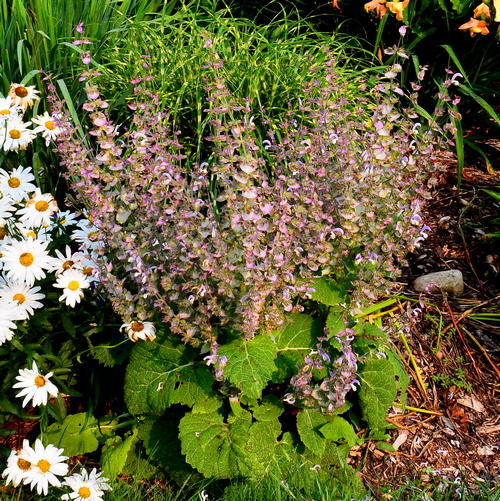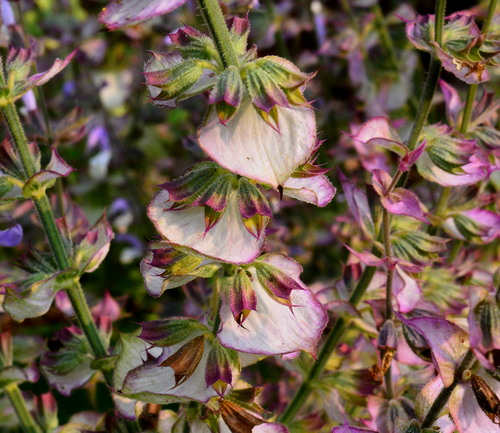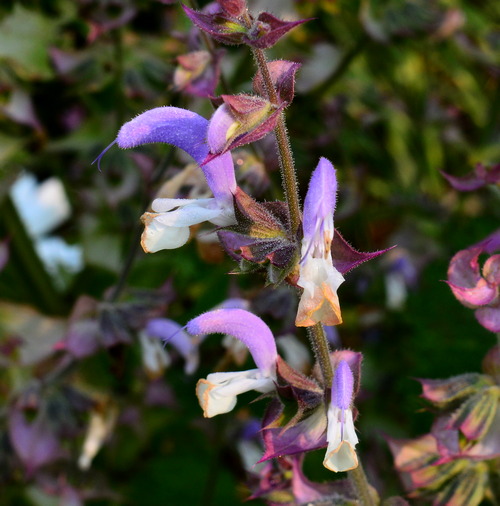Salvia sclarea has been in my garden for over 12 years and it is always a pleasure to see it. It is very fragrant, and makes a nice showing with long lasting flowers.
Salvia Sclarea v. Turkestanica, by Robert Pavlis[/caption]
There are two plants on the market with similar names; Salvia sclarea and Salvia sclarea v. turkestanica. According to the Kew plant database these are the same plant and Salvia sclarea is the correct name. Common names include clary sage, the clary, and European sage.
Salvia Sclarea v. Turkestanica, showing the bracts after flowering, by Robert Pavlis[/caption]
The clary is a biennial which makes a low rosset of leaves the first year and then a taller stem and flower the second year. It may even flower a third year and some suggest that cutting the flower stem off before it makes seed will encourage a second flowering year. My plants do not produce a lot of seedlings naturally, but there are always a few to bloom each year. It has also not strayed very far from its original location, except that it prefers seeding in the pathway rather than the garden bed. I just move a few back to the garden each year.
It has become invasive in some parts of the US.
The plant seems to flower a long time because the floral display is largely made up of bracts, which last a long time. The actual flowers are much shorter lived.
Salvia Sclarea v. Turkestanica, showing the flowers, by Robert Pavlis[/caption]
The plant and flowers are very oily and fragrant. It is more fragrant than most of the sages I grow. It has been used medicinally for at least a few hundred years and it is now used to add fragrance to perfumes and flavor to beer and spirits like vermouth. It is grown commercially in North Carolina, and must make a great smelling farm.
The leaves can be eaten raw or cooked, but they are mainly used to flavor other foods in the same way we use common sage (Salvia officinalis). Flowers can be eaten raw and sprinkled in salad. After writing this, I went to the garden to taste them - Yuck! I don't think they are edible.
Salvia sclarea
(SAL-vee-ah sklah-REE-ah)
Life Cycle: biennial
Height: 90 - 120 cm (3-4 ft)
Bloom Time: summer
Natural Range: Mediterranean region (southern Europe, central Asia and northern Africa)
Habitat: ??
Synonyms: Salvia sclarea v. turkestanica, Salvia turkestanica
Cultivation of Salvia sclarea:
Light: full sun
Soil: sandy, well drained
Water: moderate to dry, drought tolerant
USDA Hardiness Zone: 5- 9
Propagation: seeds




